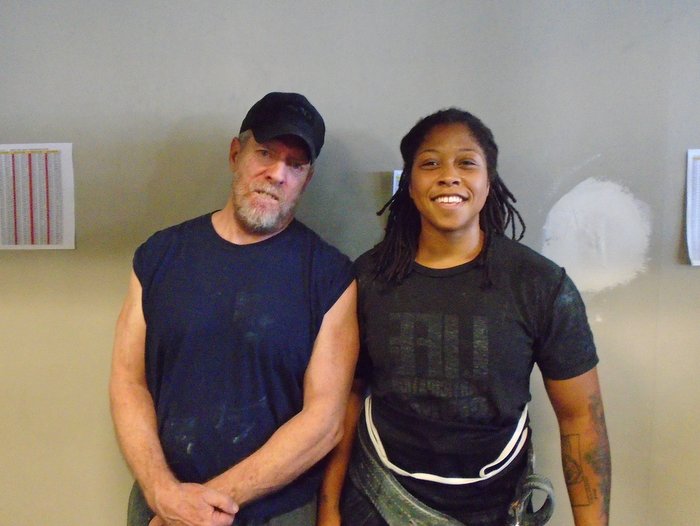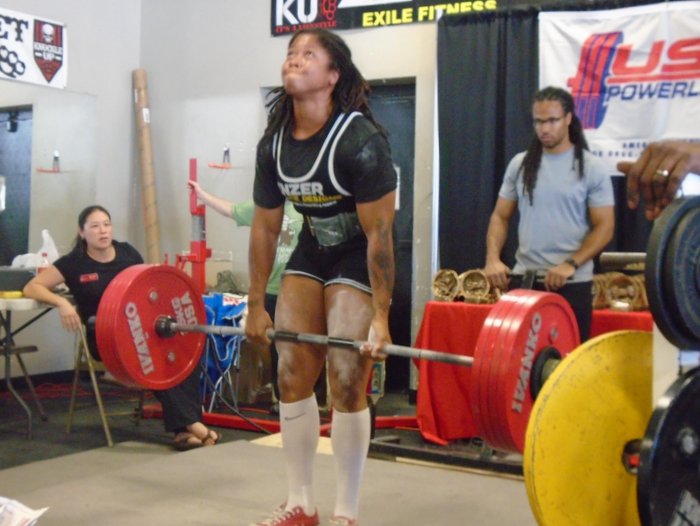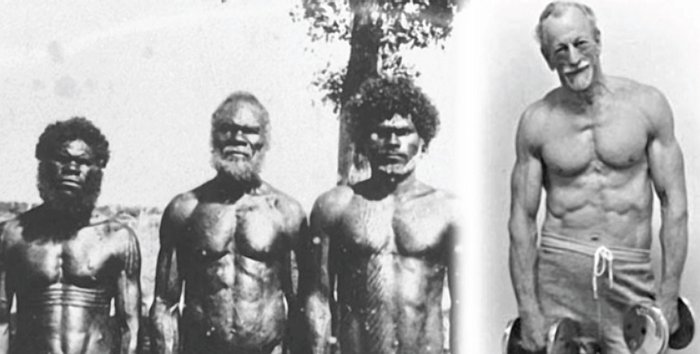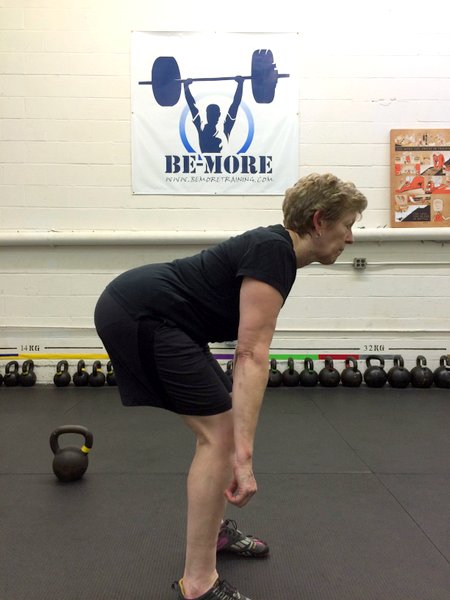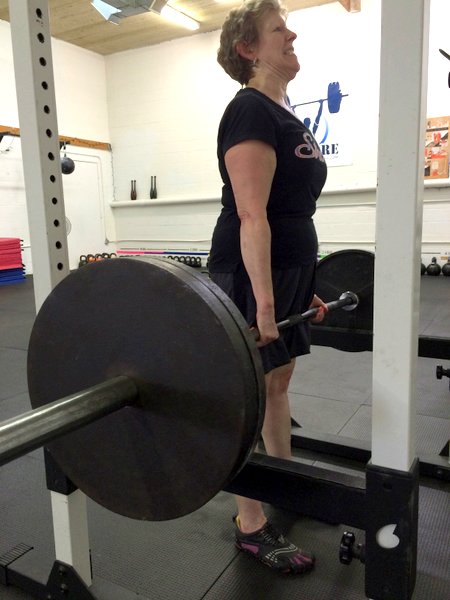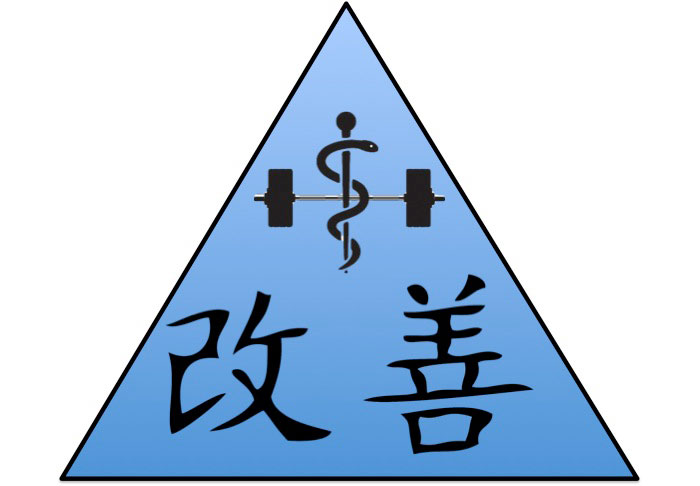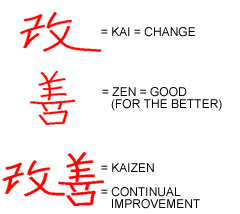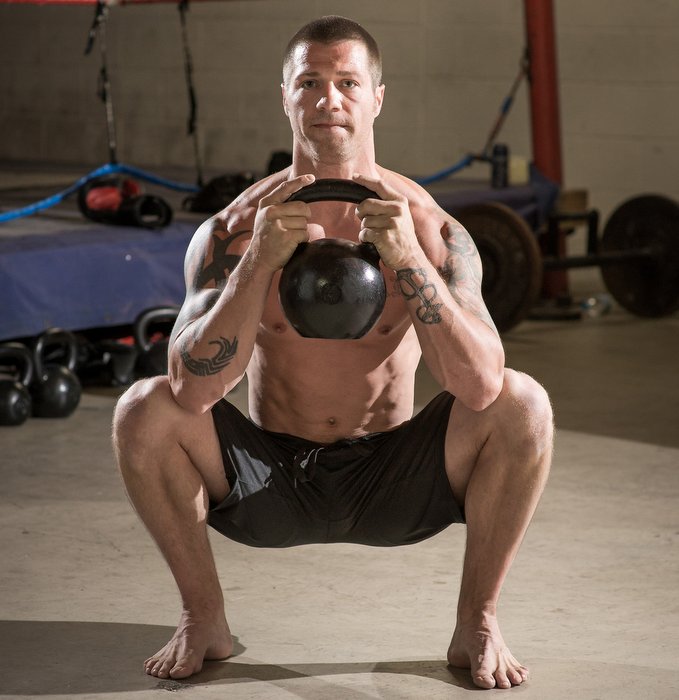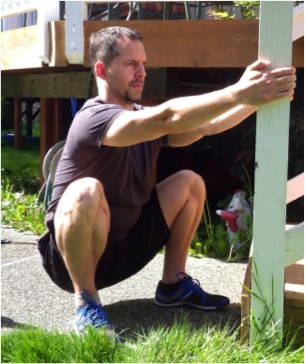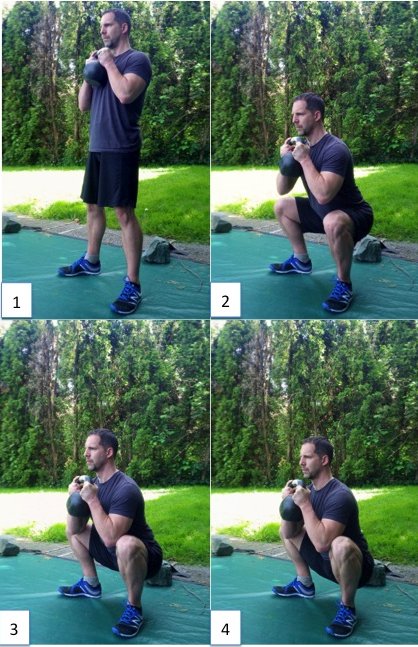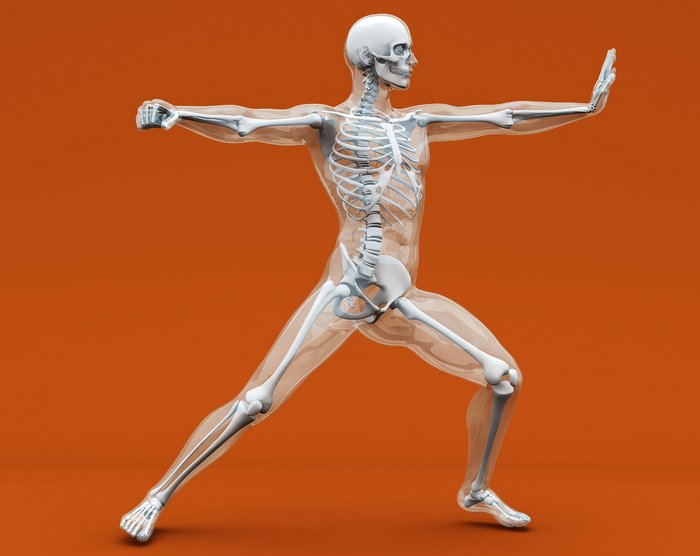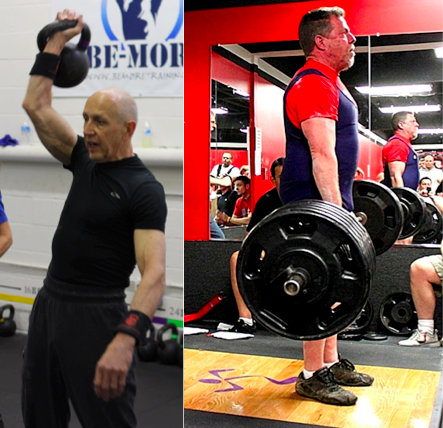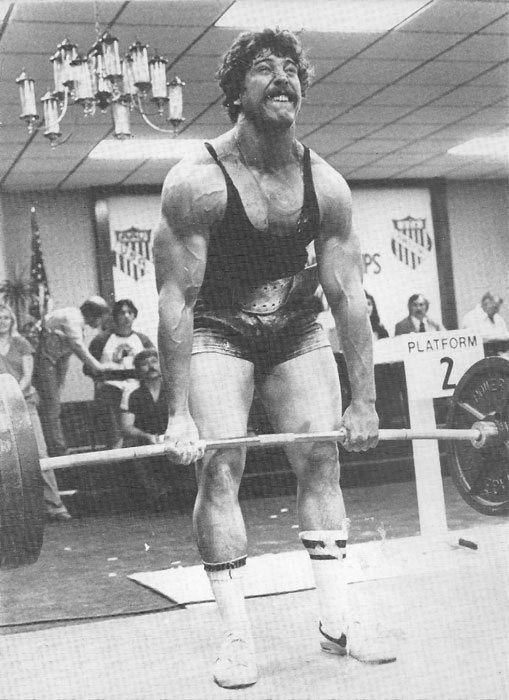
Mark Chaillet, world record holder, world champion: Mark is shown in 1980 deadlifting 800-pounds. He weighs 219 in the picture and is badly out of position, struggling to finish the lift. His shoulders have gotten in front of the bar during the upward pull and now, with legs already straightened; he must finish locking out this ponderous poundage with pure reverse hip-hinge power.
He has shot off all his muscular guns and the only tricks left in his trick bag are his python-like spinal erectors and a grip like eagle talons. He pulled this lift to completion, but a controversial decision, the three judges turn the lift down, 2 to 1, thereby costing him the national title.
Mark was my training partner for six years. He fine-tuned my deadlift technique. We were both narrow-stance conventional deadlifters and both were taught by world champion Hugh Cassidy. We both used Hugh’s technique. Mark’s face and physique shows the degree of pure physical effort needed to experience exercise-induced altered states of consciousness. Nothing less than superhuman effort will fold inner space.
The Inner Astronaut
“An exercise-induced acid trip”
I walked towards my garage gym with a head full of minor troubles. I was distracted and out of sorts. I was really considering punting the workout to another day; my head was really not into it. I was really not feeling up to butting heads with a heavy barbell. As jazz tenor saxophonist John Coltrane once noted in an interview, “I feel the closest to hell when I am dealing with money.” I second that emotion. I was tired and drained, not from any physical toil, rather from mental stress related to life and making a living.
I had myself half convinced to lie back down (it was 6AM) and read some Evelyn Waugh or Kinsley Amis and fall back asleep. I’d wake back up in an hour or so with a whole new fresh and vibrant perspective and start all over. I wrestled with my thoughts. “When a man’s head is not into the game, distraction prefigures injury,” I thought to myself. This was an excellent argument for blowing off the workout.
My conscientious right-thinking mind knew it was losing the internal argument so it decided to try a new approach. “Why not compromise? How about if you just squat light–nothing heavy, nothing ambitious, just some pristine, precise, technical bon mots–we won’t even pay any attention to the poundage. What say you, other self?” I had played the guilt card on myself and it had carried the day. I would ‘do the right thing’ (the right thing is always something I don’t want to do) and train, but train minimally and lightly and precisely in what I envisioned as a crispy technique day. Who cared if I was weak? Who cared if “light” training was about as exciting as kissing your sister?
Some training is better than no training, “an inch of meditation is an inch of the Buddha” and all of those other exhortations for mediocrity. I walked into the garage and took a look at the big clock. It was 6:18. I didn’t intend to be here long. I turned on my iPod and pulled up something mellow; I save the intense music for my strongest days, when I am fired up and ready to rip into it. Not today. Today I wanted something to keep me calm.
I selected a breezy mystical piece of music, a rare Yehudi Menuhin and Ravi Shankar album called, West meets East, recorded in 1970. I clicked on “Raga Inanda Biaravra” and the sitar and Stradivarius began riffing atop an Indian drone tuned to B♭. It was a good musical choice: I had forgotten how strange and passionate and technically superb this odd, old, and for me, recently rediscovered music was.
I loaded a 45-pound plate on each side of the Olympic barbell, already set at shoulder height in the power rack. I checked the gym clock yet again; I wanted to see how long the actual workout would take, not rushing or hurrying. It was 6:21. I ducked under the 135-pound bar, affixed it behind my neck; stood erect and stepped back. I “set up” (took adjustment steps) the squat and unlocked my knees to commence my first rep.
My body felt creaky and stiff and awkward as I lowered down. The weight felt heavy. I felt like the tin woodsman before being oiled. By the fourth out of eight reps, I had broken through my stiffness and awoken my central nervous system. My muscles were being forcibly stretched and warmed, flushed with blood, like it or not, ready or not.
The 135-pound squat set shocked my body awake on every level. It was as if I had jumped into a freezing river. My body, brain and central nervous system were bitch-slapped. I racked the weight. As was my recent habit, immediately after every set of light squats I would perform a slow and precise set of lying leg curls. After eight slo-mo leg curl reps, I immediately performed a set of calf raises. These were done one leg at a time on a stair-step while holding a 40-pound dumbbell in one hand while using the other hand as a support for balance.
On every rep of every calf raise I would stretch as far down as possible then rise up onto the ball of the foot, ending in a ballet-dancer toe extension flexion. I would go to failure with each leg and then immediately “rep out” with both legs. I would do three “tri-sets” (squat, leg curl, calf raise) and rest two to three minutes between each tri-set. I would add a little bit of poundage on the leg curls and use a slightly heavier dumbbell on each successive calf raise set.
The sequence would go: squat, leg curl, calf raises, rest. I would take the 135-pounds one more time for a second 8-rep warm-up set. This one was a delight compared to the first. Loose and warm, I got looser and warmer the deeper into the second set I got. The music was sounding good, appropriate for the early morning dawn. The door was wide open and the October backyard was lush and green with dew on the grass. It was truly picturesque and suddenly I felt good.

I was really listening to the music, trying hard to follow the lightning fast arpeggio riffs. During Swara, the dappled sunlight was pouring into the gym; the 65-degree temperature was perfect for iron slinging, the music was pulsing and I was starting to get swept away.
For my third squat set, I would handle 185 for six reps. I felt the telltale tinkle of an adrenaline dump as I ducked under the squat bar for the 185-pound set. I snapped it out of the supports, stepped back, set it up and performed six perfect reps. The weight felt incredibly light. This further amplified my burgeoning psych. I did my final tri-set. I had performed 9 total sets in five minutes. My body and legs were vibrant and awake. From this point forward, I would squat and squat only. I had gotten in my three “to failure sets” of the leg curl and calf raise, now 100% of my energy and effort would be directed at the remaining four squat sets.
In quick succession I hit 225, 255 and 285-pounds, all for a single repetition. The idea was to not waste any strength performing a lot of reps on warm-up sets. The single rep sets, spaced a few minutes apart, allowed me to “feel” increasingly heavier weight on my back, yet without frittering away any precious strength or energy best saved for the final, all out set. Each rep felt “snappy” i.e. I was able to accelerate upward and to a dramatic degree on each single.
The last set, the final set, was the only set that mattered: all the good stuff, all the strength increases, all the muscle hypertrophy, occurred during the final squat set. As Cassidy, my Zen lifting mentor used to say, “Everything before the top set is just throat-clearing and windup. Don’t blow your wad on the warm-up sets and preliminary sets.”
Warm, centered and ready, I loaded the barbell to 315-pounds. I felt my “wordless” psych coming on strong. I could “feel” my focus sharpen as I became increasingly focused and aggressive in immediate anticipation of the final all-out squat effort. Five days ago I had done 305 for 6 reps and the final two reps had been hell and barely made–but made nonetheless. Now, on a supposed “off day” (remember, I almost blew off the workout on account of distraction and stress) I felt good enough to attempt ten more pounds.
I knew myself and I knew the difference between real preparedness and feigned or superficial preparedness. I could not afford to tackle this poundage with fake, pretend or faux readiness. The nagging problems that had been bothering me before, the money and people woes, had long since evaporated.
It was Go Time. I switched to some hard, hard music, violent, visceral and aggressive. I began my psych ritual by pacing. I could feel the adrenaline coursing through my body. I could feel the fight-or-flight switch being thrown. The hairs on the back of my neck and on my arms stood up as a cocktail of hormones were fuel-injected into my bloodstream. It was time to storm the barricades.
I wheeled and strode to the bar; I got under the bar ASAP, set up and snapped the barbell out of the racks. In my state of excitation, the 315 felt lighter than the previous 285-pound effort; a great sign. I stepped back and set up. I broke my knees to begin the first rep. I eased downward, feeling the weight every inch of the descent. It felt as if it took forever to bottom out. I made sure I was perfectly positioned on the descent. Now it was time to come erect. Above all else, I would NOT fudge on the depth–every rep had to be ‘bottomed out,’ taken as deep as humanly possible, 6-10 inches below parallel.
I threw my knees out hard as I bottomed out and powered upward. I stood with real acceleration, the first few reps felt powerful and relatively easy. I became instantly elated; electricity was shooting through my central nervous system. On every inch of every squat rep I focused my eyes on a spot on the wall at eye level directly in front of me: it was as if I was trying to use X-ray vision to burn a hole through a quarter-sized hole on the wall. This intense visual focus kept me balanced by providing a stable reference point as I dipped and arose with a body-crushing weight on my back.
If my eyes wandered I would become unstable and instantly lose my balance. Psychologically, the intense visual focus provided my consciousness with a simplistic fundamental task that was critically important: if my eyes wandered for a split second I would lose the rep. This critical task kept a portion of my brain engaged at a high level and continual level, one lapse and I would collapse. I could not let my excitation and psych create slop and chaos. The 2th rep was effortless. Mind and body had successfully unified in order to cope with the severity of the effort
For the first three reps, a single aggressive breath between reps was all that was needed. Rep # 4 slowed a bit as I experienced a definite power stall at the top. No problem, I stood erect and fully locked out. I now forced three huge breathes. I held the third breath, broke my knees and descended for rep five. Rep #5 felt heavy going down and felt heavier still standing erect. High-end acceleration was suddenly replaced by grind; high-end horsepower was replaced with low-end torque. I shifted into four-wheel low and ground number 5 to lockout.
I pushed through the sticking point and stood erect. One more to go; I stood and inhaled “as if trying to suck all of the air out of the room.” I unlocked my knees and began the final rep. While rep six was more difficult than rep five, the final result was never in doubt: the barbell never stalled on its upward trajectory and I never lost my laser eye focus. I locked out rep six and re-racked the barbell with great care. I had given 105%.
I peeled myself off the barbell carefully. I was huffing and puffing and held onto the squat bar with two hands in case I fainted or fell down. I glanced at the clock: it was 6:42. The entire torture-fest squat session, a total of seven sets, (plus six sets of calfs and hams) had taken a grand total of 21-minutes. My legs felt shaky as I wobbled to the nearby flat bench and sat down.
I immediately turned off the music. The violent battle music soundtrack was suddenly inappropriate. I took stock: I was physically shattered; my body was shaking; yet I was elated. As I sat, I noticed all five sense-gates (smell, hear, feel, touch, see, conscious awareness) were wide open and hyper-receptive. I felt like a nuclear isotope, generating heat, glowing. I felt perfect. No thoughts were needed; no commentary could do justice to what I was feeling. I purposefully sunk further into this exercise-induced acid trip. Suddenly an old nonsensical Zen koan made perfect sense to me, “Iron Mountains, Silver Cliffs–Soaring!”
Once again I had entered into this exercise-induced state of altered consciousness: It was Iron Zen, a satori-state, the Zen of pure physical effort. I sat on the exercise bench facing the open doorway in perfect stillness and deeply satisfied equanimity. I sat like a mountain as I gazed out from within my skull with divine mental silence and a relaxed “soft eye” I was taking in everything at once. Another Zen koan came to mind, “Stoned…Immaculate…” that one from Zen Grand Maestro, Jimi Hendrix.
The beautiful orange-leafed Japanese maple, statuesque and perfectly framed in the doorway was contrasted with the most luscious green grass, grass that glistened with diamond dew. I put back the mystical Indian music back on and placed my hands in the cosmic mudra in my lap. I would sit in this wordless bliss for another perfect 30 minutes.
I felt myself start to slump and fuzz out, so I stood, stretched, yawned and headed back into the house. Still enveloped in quietude, I mindfully made myself a nutrient-dense post-workout regenerative shake. My concoction consisted of protein powder, raw peanut butter and raw milk and was unbelievably delicious, particularly while still in the throes of a heightened sense of taste. This “meal in a glass” was ideal for healing a shattered body. I laid down on my futon in the living room and immediately fell into a narcoleptic power nap. For 40 minutes I was in a deep sleep coma. I swear I could feel my body growing as I bathed in deep, dreamless REM.
I awoke refreshed, drank some potent coffee and admonished myself: and to think, I came within a whisker of blowing off the transcendental workout. What did I learn? The hard lesson might be, “How you feel is a lie.”
***
Marty Gallagher is the author of Strong Medicine, The Purposeful Primitive and Coan: The Man, The Myth, The Method. Gallagher coached the United States team that won the IPF powerlifting world team title in 1991. He is a 6-time national masters champion and national record holder. He was the IFF world master powerlifting champion in 1992. He currently works with elite athletes, spec ops military and governmental agencies.

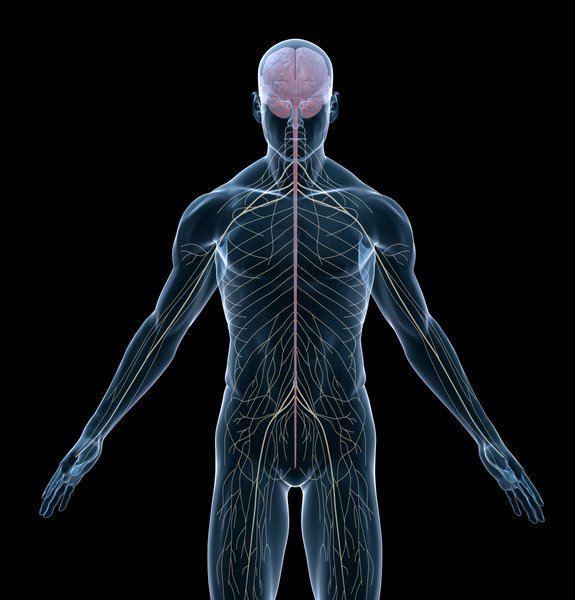
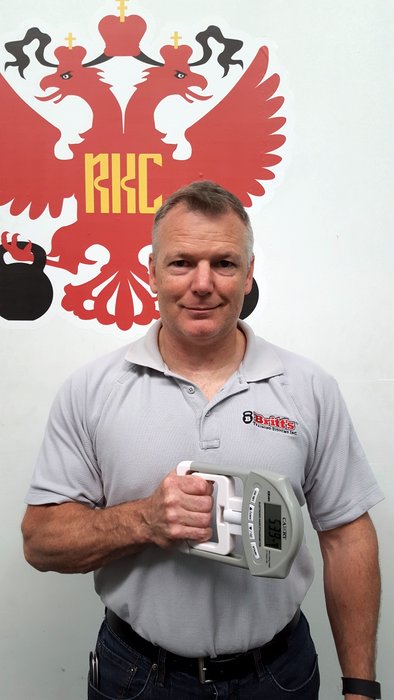
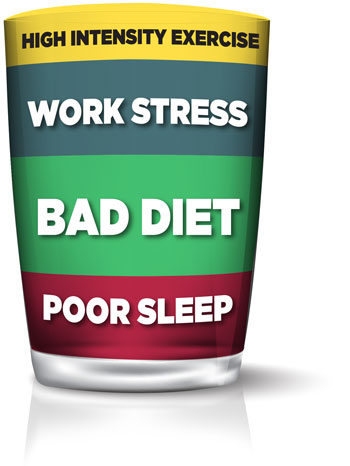 Dr. Hardy mentioned grip strength as a possible tool to measure the stress cup on a daily basis. There are studies that have shown that a decrease in grip strength is correlated with strokes, heart attacks and overall longevity—it made sense that it would also be an indicator of Central Nervous System health. I also liked the fact that it was a quick and easy check that I could do daily before I trained.
Dr. Hardy mentioned grip strength as a possible tool to measure the stress cup on a daily basis. There are studies that have shown that a decrease in grip strength is correlated with strokes, heart attacks and overall longevity—it made sense that it would also be an indicator of Central Nervous System health. I also liked the fact that it was a quick and easy check that I could do daily before I trained.